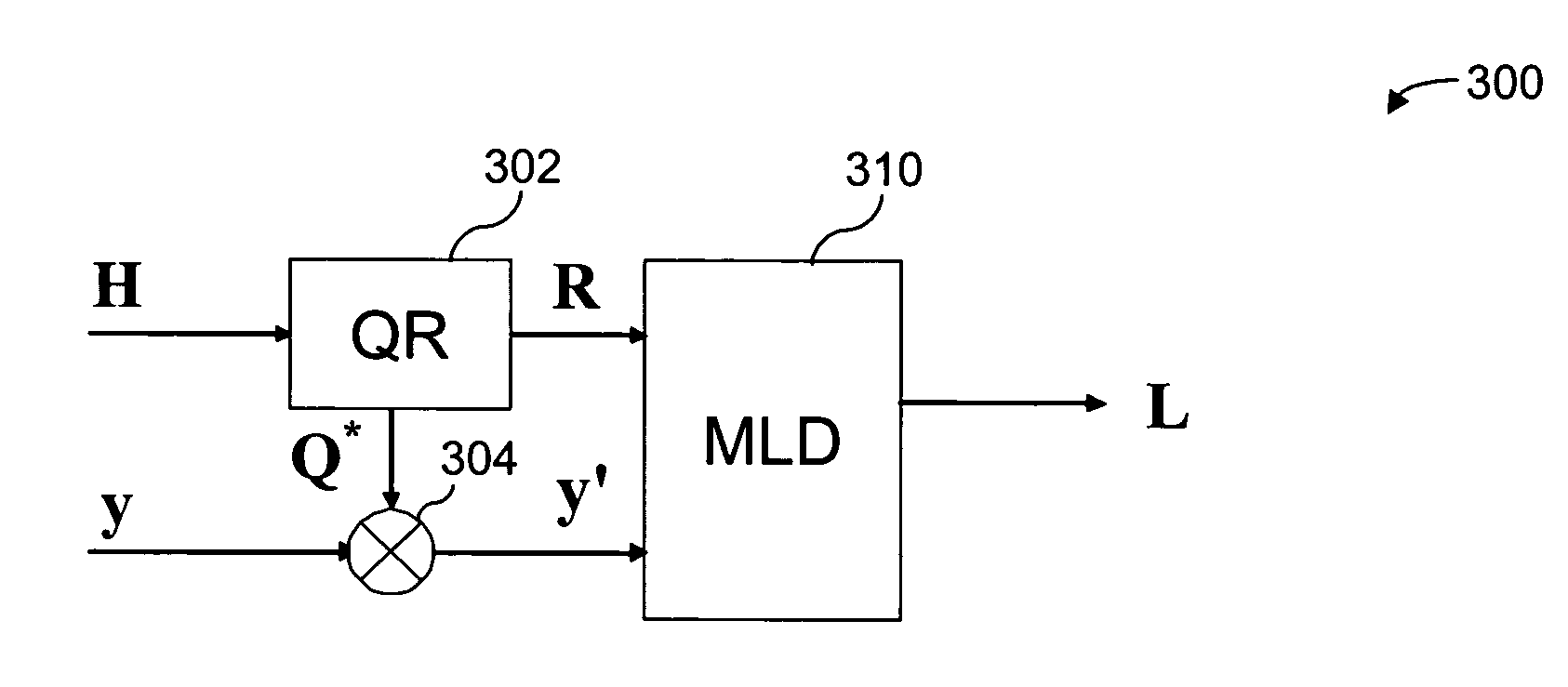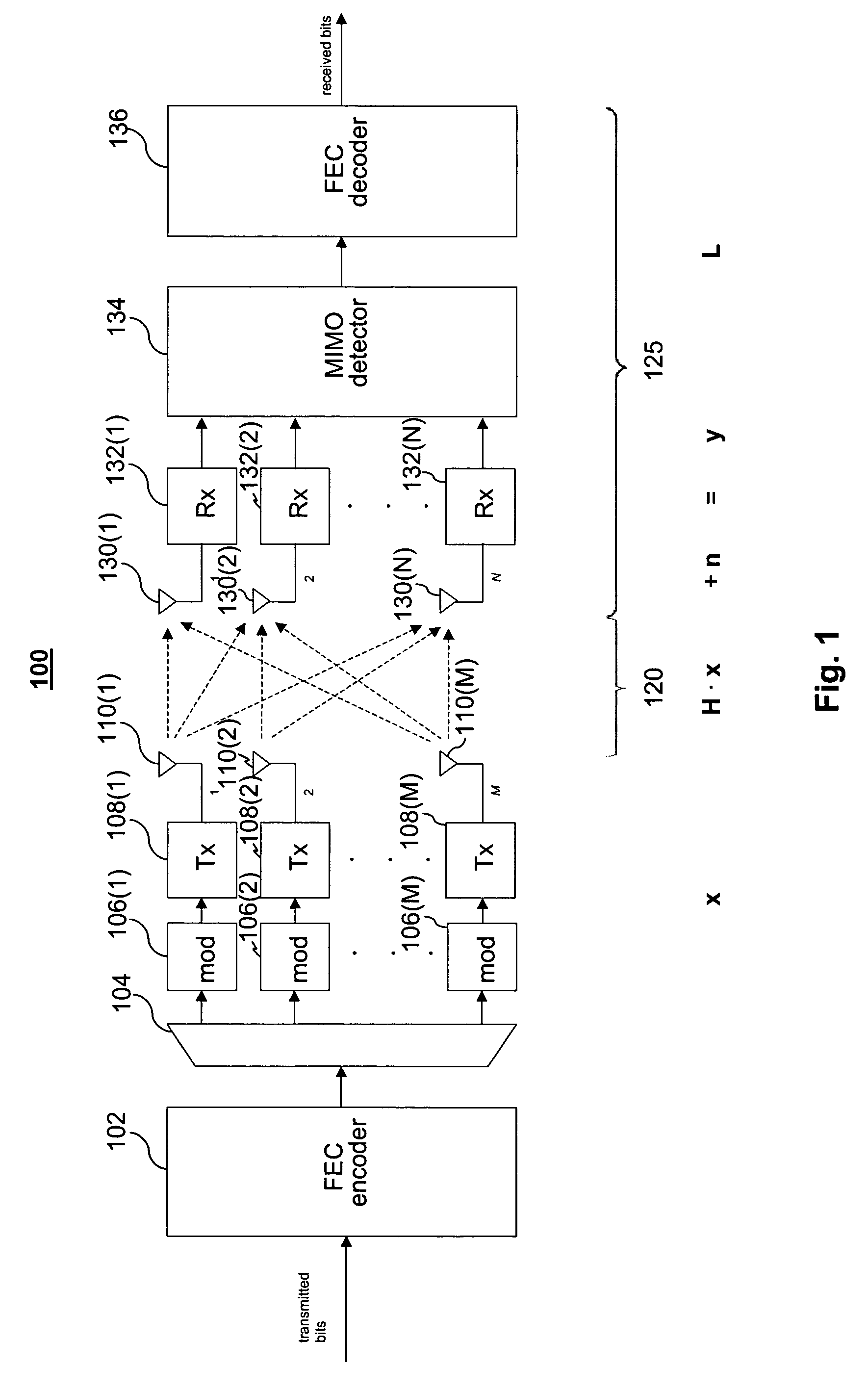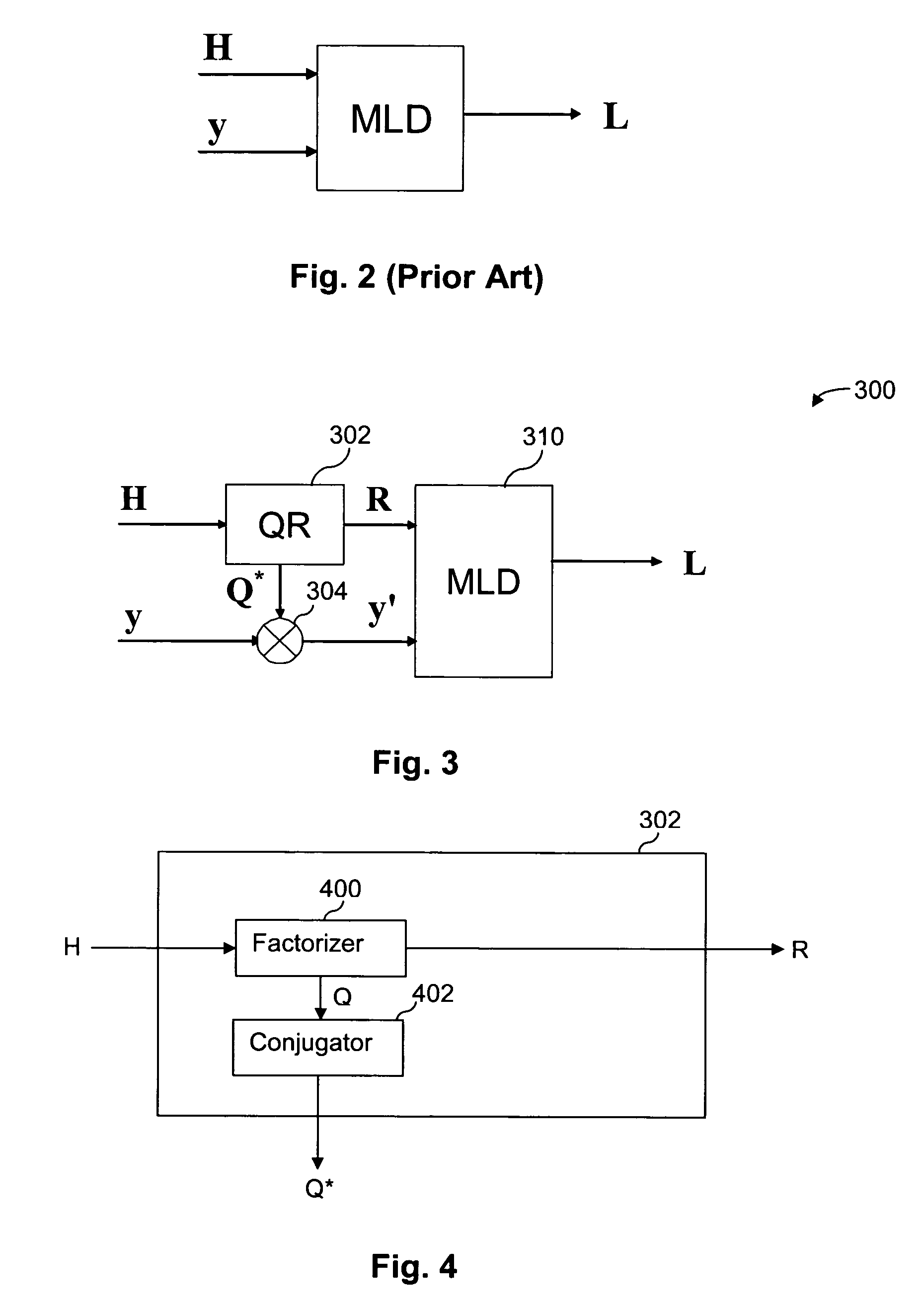MIMO receiver using maximum likelihood detector in combination with QR decomposition
- Summary
- Abstract
- Description
- Claims
- Application Information
AI Technical Summary
Benefits of technology
Problems solved by technology
Method used
Image
Examples
Embodiment Construction
[0060]In embodiments of a receiver according to aspects of the present invention, QR decomposition is used to reduce the number of operations required for detection. As a side effect, some approximations used in computation become less significant, thereby providing higher performance for a given level of precision or comparable performance using lower levels of precision.
[0061]Reducing computational complexity can relieve design constraints and / or allow for improved performance. For example, with reduced computational complexity, received signals can be processed faster for a given amount of hardware thus allowing higher data rates and, for a given data rate, received signals can be processed using less hardware, less power or fewer processing steps. In some instances, computational complexity can be reduced without affecting the resolution of the results, thus not lowering performance. Thus, a savings of computational complexity can be used to provide comparable results more quick...
PUM
 Login to View More
Login to View More Abstract
Description
Claims
Application Information
 Login to View More
Login to View More - R&D
- Intellectual Property
- Life Sciences
- Materials
- Tech Scout
- Unparalleled Data Quality
- Higher Quality Content
- 60% Fewer Hallucinations
Browse by: Latest US Patents, China's latest patents, Technical Efficacy Thesaurus, Application Domain, Technology Topic, Popular Technical Reports.
© 2025 PatSnap. All rights reserved.Legal|Privacy policy|Modern Slavery Act Transparency Statement|Sitemap|About US| Contact US: help@patsnap.com



